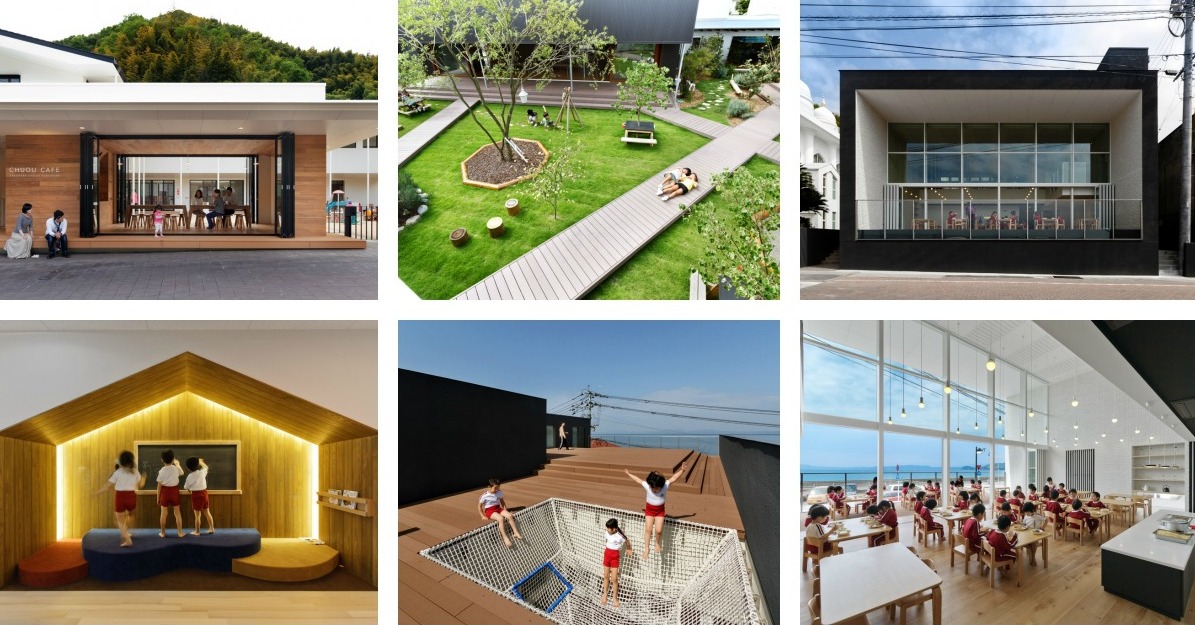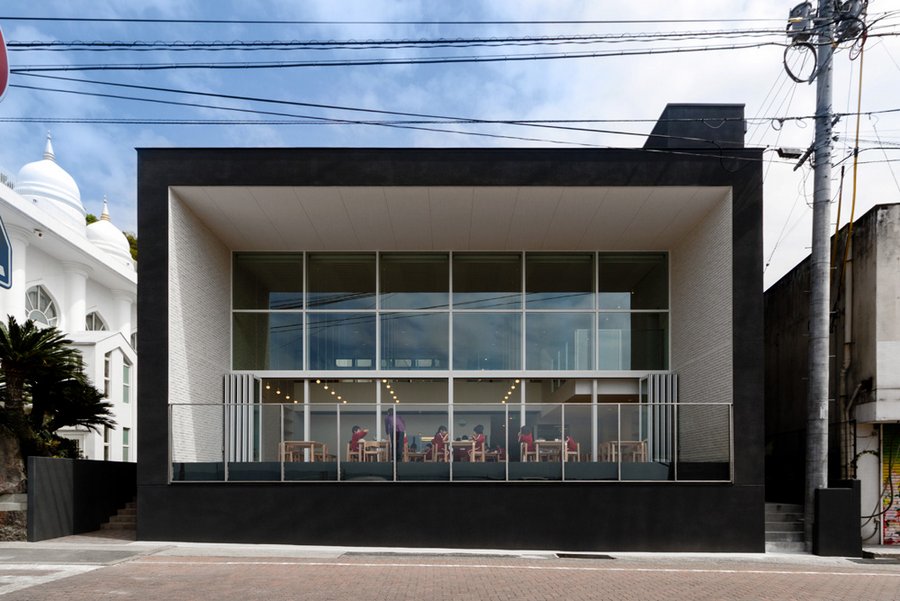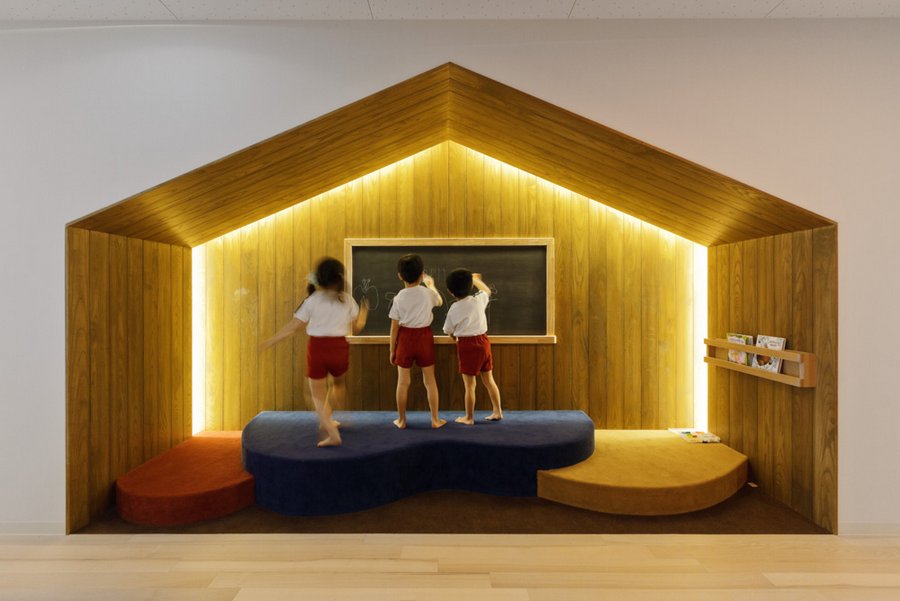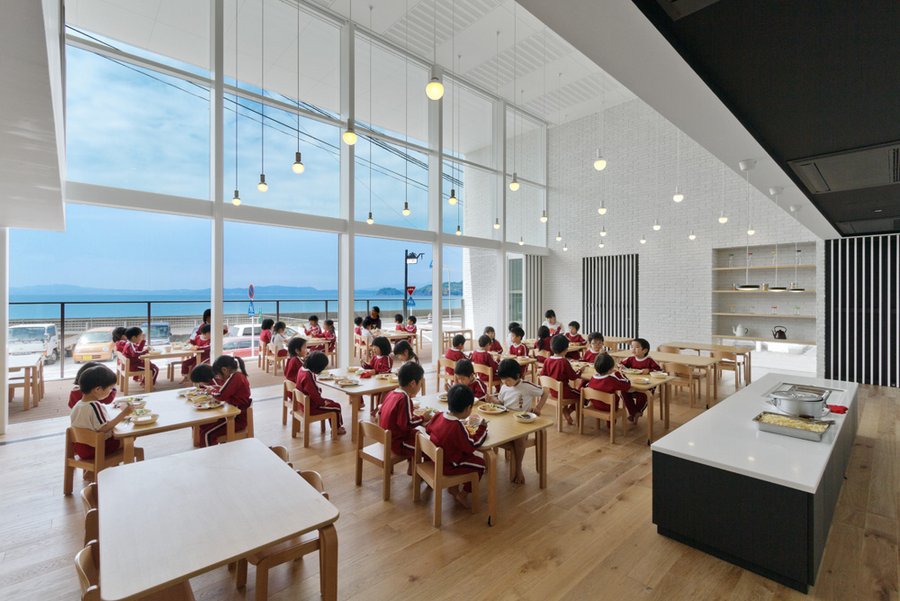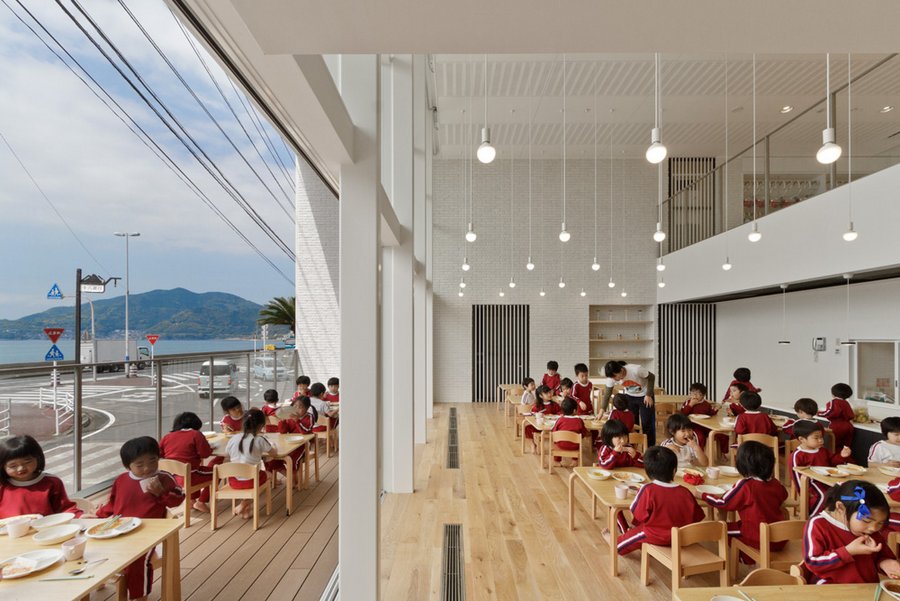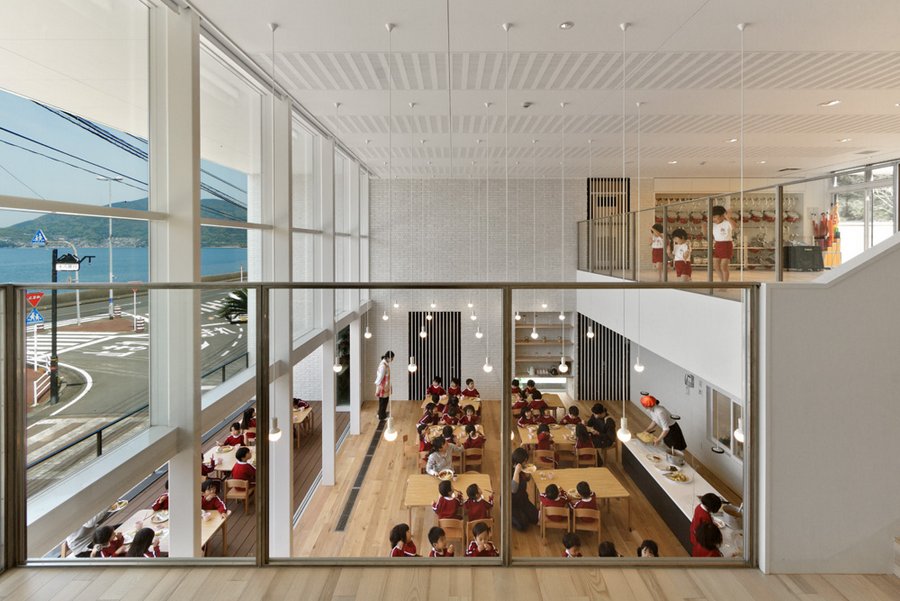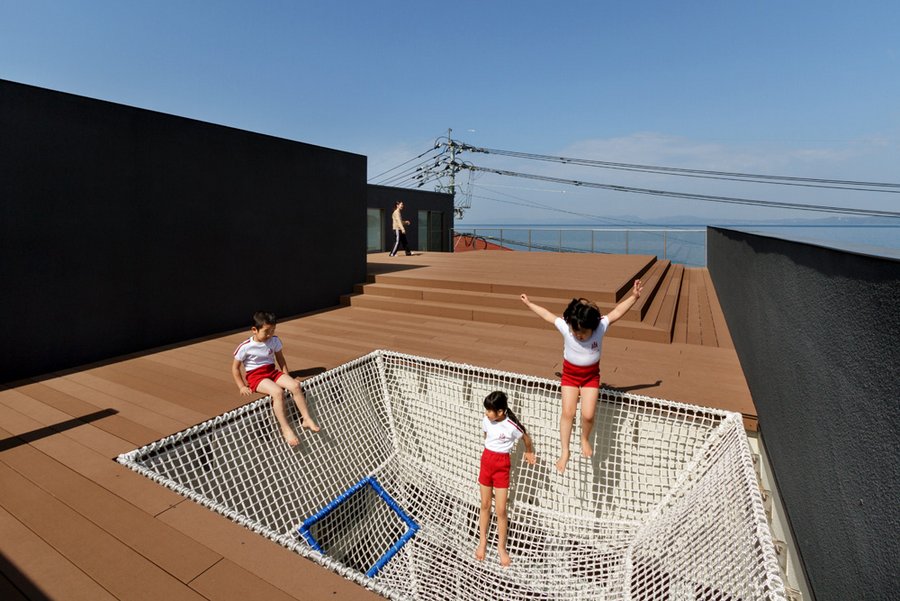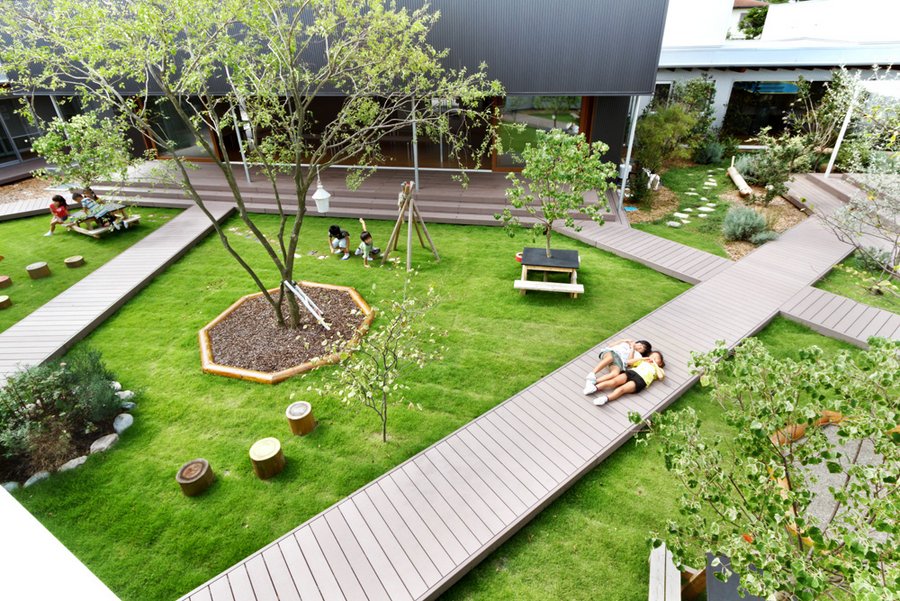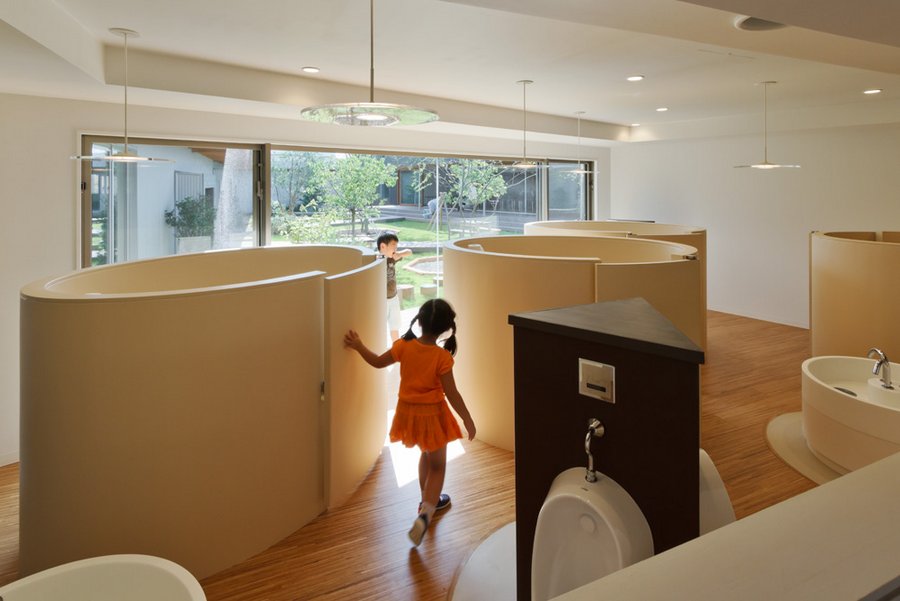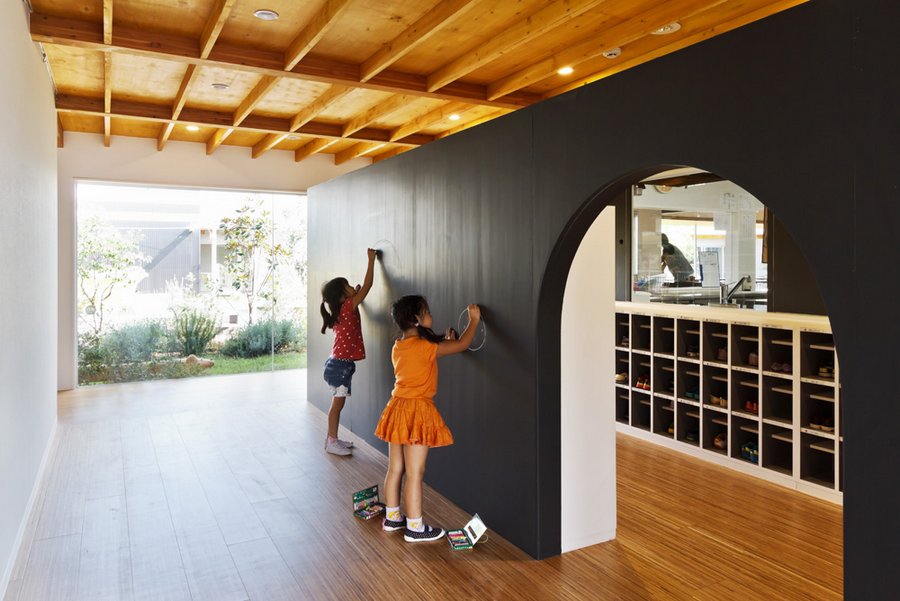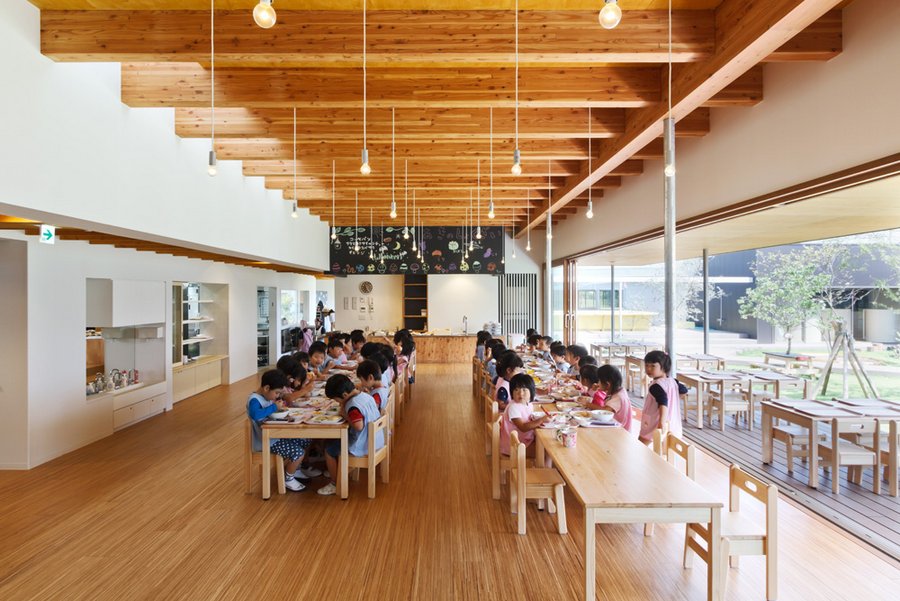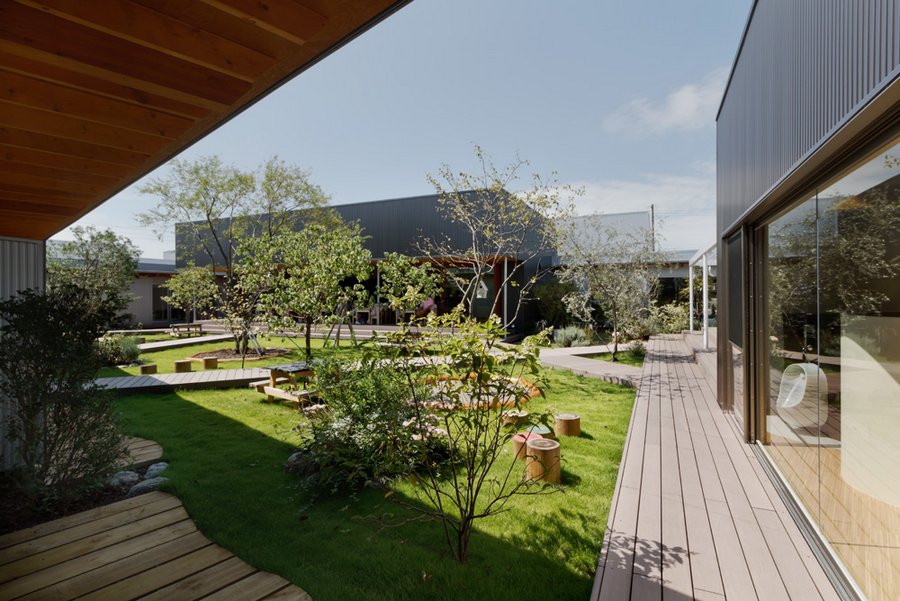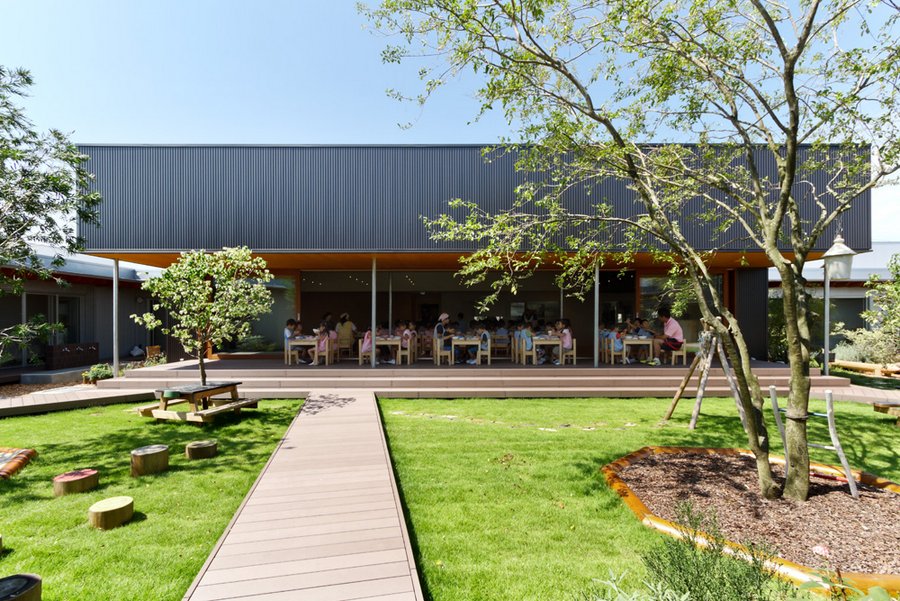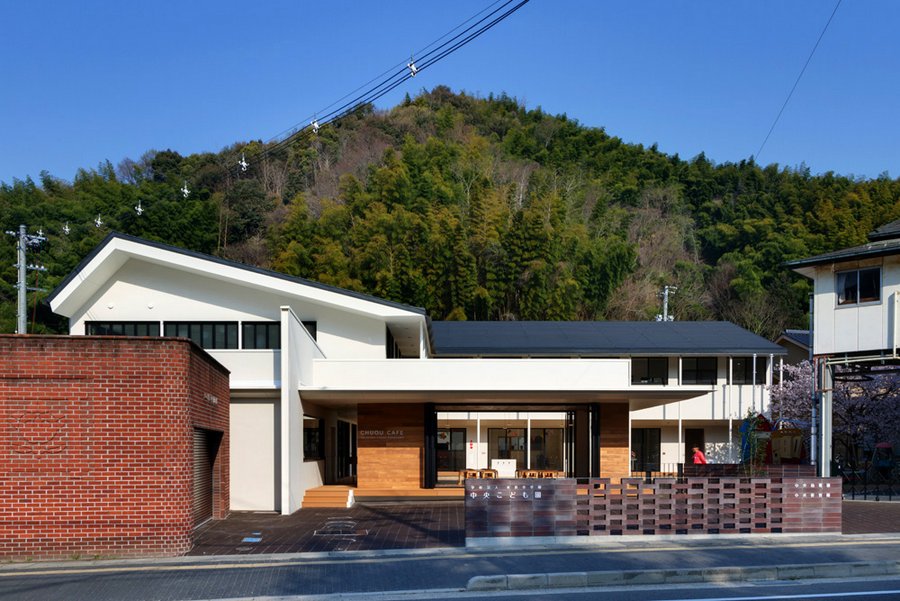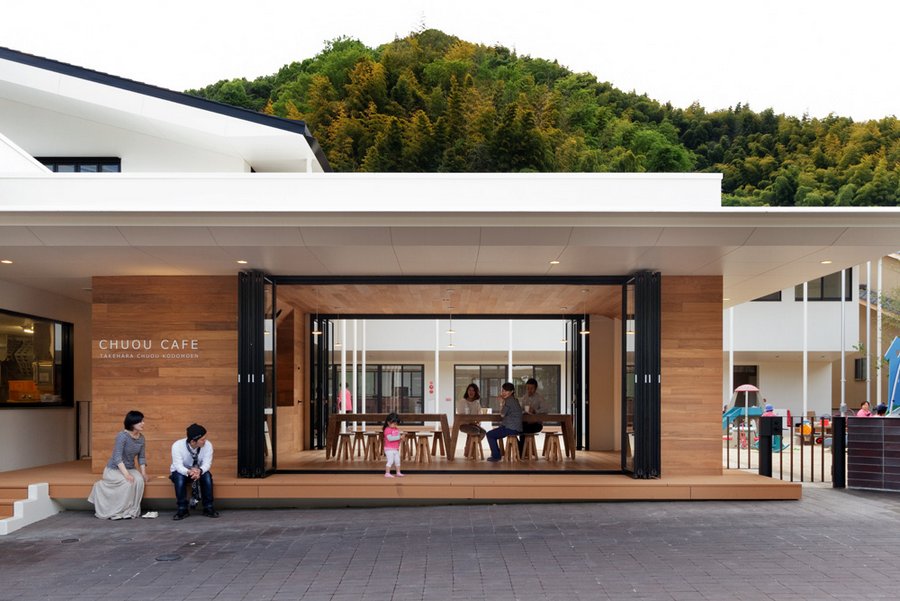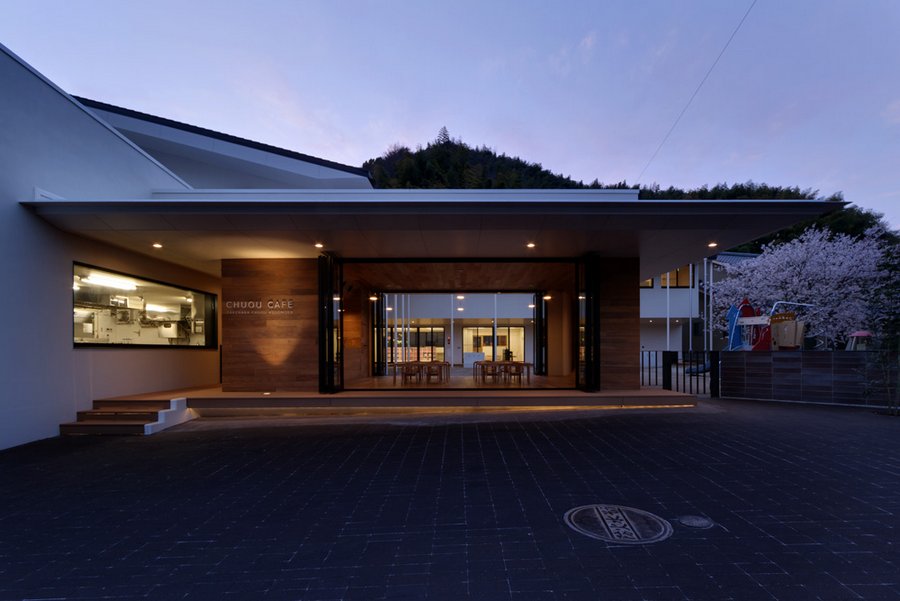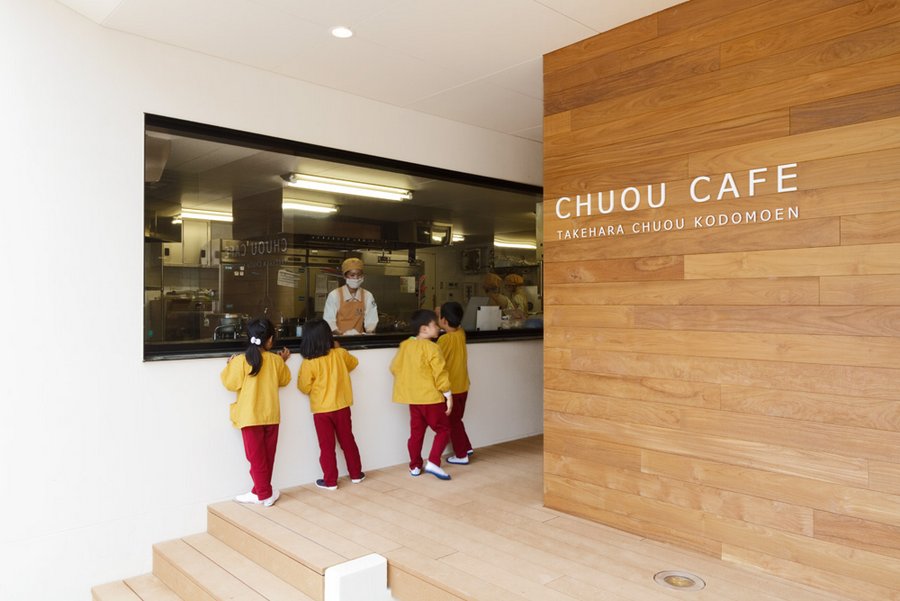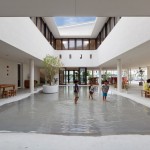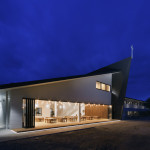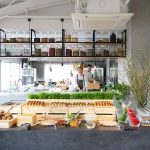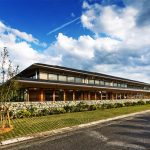If you wanted great sushi you wouldn’t go to a diner, right? You would go to a sushi shop. And if you wanted Italian food you wouldn’t ask your sushi chef to boil pasta. The same thinking, says Taku Hibino, should hold true for architecture. Hibino is one chief architects at Hibinosekkei+Youji no Shiro, an architecture firm and brand in Japan specializing in the design and construction of learning facilities for early education.
Obama Kodomoen (2015)
“Sea x Music x Art.” The Obama Kodomoen (no relationship to the president of the U.S.) is like an interactive museum for kids. Located in Nagasaki, the structure was designed to incorporate the nearby ocean. A hallway that encircles the whole facility makes sure the kids relieve all their energy before they sit down in the art studio (or stand next to the numerous chalkboard walls) to nurture their creative side. The cafeteria boasts spectacular views of the water.
Japan is now facing a critical decline in population and startlingly low birthrates. One would expect Hibino’s business to be suffering. But instead, it’s booming.
The firm dates back 43 years when Japan was in the midst of radical change and development. In the 1970s Japan was miraculously sustaining its economic development, albeit at a slower rate, even sustaining higher petroleum prices despite being a nation with few natural resources. After its 1st baby boom in the late 1940s, Japan experienced their 2nd baby boom in the early 1970s, which spurred massive demand for childcare facilities. Between 1972 and 2005 the firm built over 50 educational facilities.
Doaishari Hoikuen (2014)
Although the strong winds that blow through Kamisu City in Ibaraki prefecture are great for its many wind turbines, it meant that the nursery school had to be designed to protect kids from strong gusts. The architects proposed a courtyard-type structure with an open layout and open cafeteria that actually helped kids conquer some of their veggies that they wouldn’t touch at home.
Special emphasis was placed on the bathrooms too in order to rid preconceived notions that bathrooms are dark and scary places.
“We have a lot of experience,” says Hibino, “but each time we realize there’s something we could have done better.” Japan is now facing a critical decline in population and startlingly low birthrates. One would expect Hibino’s business to be suffering. But instead, it’s booming.
In the last 10 years, since the Youji no Shiro brand has been established, the team has completed over 300 early education facilities. The strong demand for the HIBINOSEKKEI+Youji no Shiro is perhaps due to the amount of empirical evidence that points to overwhelming benefits for early education. But it’s also the current environment, explains Hibino. Early education requires vision and leadership. And when educators in Japan get serious, they know who to call.
Chuo Kodomoen (2015)
Hiroshima’s Takehara City is experiencing a sharp decline in population and birthrate. But instead of ignoring the issue the architects proposed to face the issue head on. The created a structure that open to the community and embraced the homey charm and communication between residents that still existed. In particular, the café was modeled after an engawa, a veranda-like structure found in traditional Japanese homes. The café is open to the public and even functions as a bar during after-hours. Although unimaginable in the U.S., it’s a great asset for the community.

